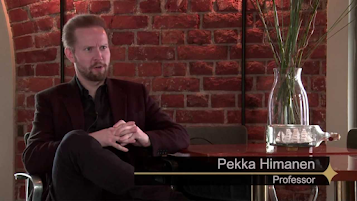Review of “Challenges of Global Information Society” by Pekka Himanen (Week 4)
[source: https://www.youtube.com/watch?v=r5YNikq6IsU]
Pekka Himanen is a
Finnish philosopher who is internationally known for his research and who has
been involved in writing and editing 15 books and articles
Review of the Report
Firstly, the author
introduces us to the “Global Trends” which he has written in the year 2004.
Most of these predictions are true when we look at them from the viewpoint of a
human living in 2022. For example, saying that there will be a new global
division of labor is accurate. As the labor cost is cheap in countries like
India, Pakistan, China most of the companies moved their production to such
countries. Additionally, the pressures on the welfare state did really increase
as people, especially in European countries are getting older which makes it
harder for young people with less population to provide such an amount of
pension money for them. The main reason why it is mostly associated with
European countries is that the decline of population is mainly trending in such
countries. On the other hand, there were some forecasts which have not yet come
to fruition. One of those prognoses that have not been realized is “the rise of
bio-industries”. Even though scientists try their best in achieving new cures
and new types of medications it still can not be considered as a “rise”. Nevertheless,
it is highly possible that this prediction will become true in the near future
because the advancements that were made to the technology in those 18 years
created an easier interface for scientists and doctors to work with rather than
a technology that was developed until 2004.
Secondly, Dr. Himanen presented a list with 10 great values which might have led Finland to the situation that it is in right now. He believed that caring is something fundamental as it develops a place where people would work to “create equal opportunities”. The other value which I liked comparatively is the “encouragement”. It is really important to make sure that people who you interact with should feel that they can do a lot more than they think so. It can be said that without encouraging others it is hard to expect much productivity from them. Additionally, the writer believes that there should be a balance between all other values. Later on, he elaborates more on this value with a graph that mentions the state of being with the help of these values. For instance, if there was no confidence and care it would result in fear and so on. Based on this information, I can say that this list may have encouraged Finland to become one of the happiest countries in the world.
Conclusion
In
conclusion, I can say that reading this report was pleasant and interesting.
The main reason behind this is that the predictions and other facts such as
values were a piece of information that I never confronted in my life.
Moreover, it is also worth stating that some of those forecasts did come
through while others are still in development and will realize soon.
References
|
[1] |
M. D. F. All.
[Online]. Available: http://pekkahimanen.net/bio. [Accessed 2 February
2022]. |


Comments
Post a Comment